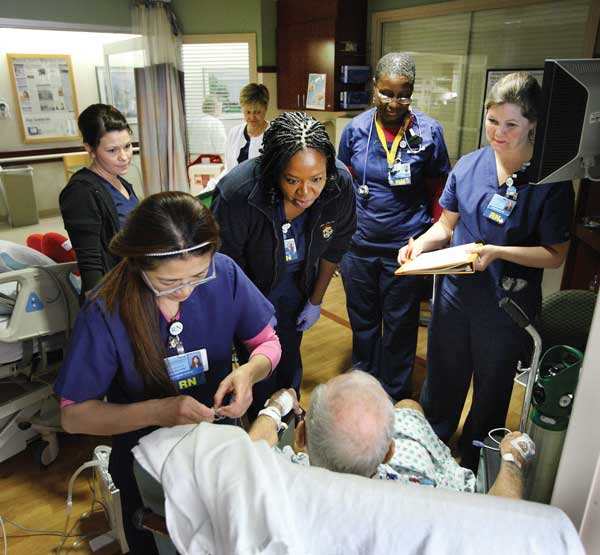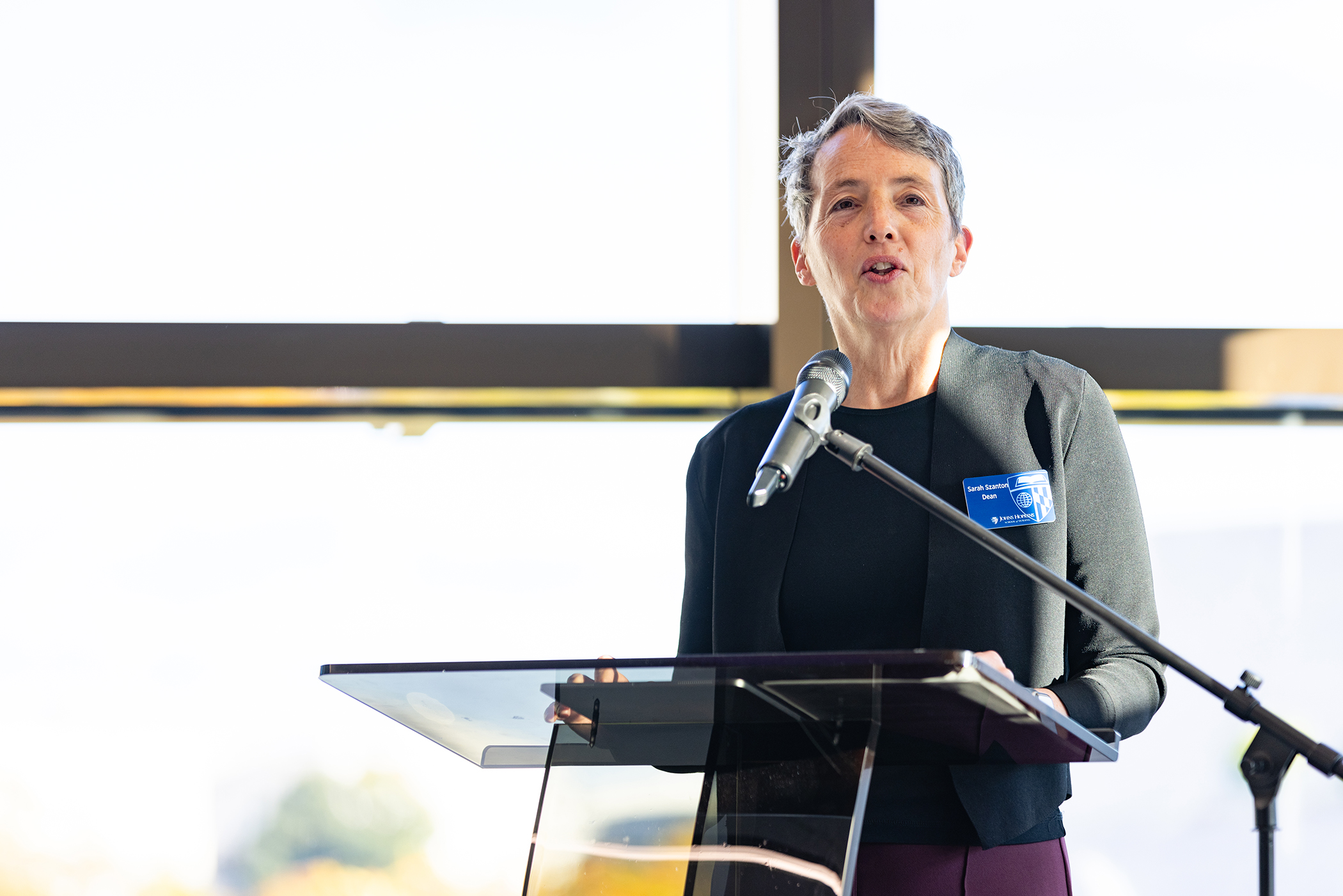Suburban Hospital Takes Big Steps
by Susan Middaugh
![]() Patients wearing yellow socks or yellow gowns. A yellow sign outside a patient’s room. These “flags” remind nurses and staff at Suburban Hospital that these patients, most age 65 and over, are at great risk of falling. The signs and accessories represent just one dimension of a recent initiative by Suburban’s bedside nurses to reduce their inpatient fall rate. Before the policy change, “we reviewed falls on a retrospective basis in committee,” says LeighAnn Sidone, MSN, RN, OCN, CENP, director of professional practice and nursing quality. “We didn’t always have all the information we needed and lost an opportunity to teach.”
Patients wearing yellow socks or yellow gowns. A yellow sign outside a patient’s room. These “flags” remind nurses and staff at Suburban Hospital that these patients, most age 65 and over, are at great risk of falling. The signs and accessories represent just one dimension of a recent initiative by Suburban’s bedside nurses to reduce their inpatient fall rate. Before the policy change, “we reviewed falls on a retrospective basis in committee,” says LeighAnn Sidone, MSN, RN, OCN, CENP, director of professional practice and nursing quality. “We didn’t always have all the information we needed and lost an opportunity to teach.”

Now, a group of responders called the Morse Team goes to the unit where a fall has happened within minutes of an occurrence. The team—a registered nurse, a nursing assistant, and a nursing supervisor from a different unit—speaks with the patient and the patient’s nurse and nursing assistant to find out what happened and what corrective steps might avert a future mishap. “The goal is to assess the situation, look for opportunities to improve, and educate their peers on the spot,” says Sidone. The team, which also includes a pharmacist, gathers data to identify potential contributing factors such as the patient’s mental status and medications; hazardous conditions, such as lighting and floor surface; staffing; interventions made or not; and caregivers’ awareness of the patient’s risk level. The data is recorded on a form and shared with the unit director and with that group’s representative to the Nursing Quality Safety Service Council (NQSSC). The Council has the responsibility for identifying trends.
Prevention is also intrinsic to the nurses’ agenda. Finding solutions to help prevent falls and to better understand why falls happen was shared by Suburban’s four nursing councils. The councils included bedside nurses every step of the way. What emerged was a need for education across a spectrum of caregivers. “Nurses wanted to better understand the circumstances leading to a patient fall. The Morse Team evaluation provides that information,” explains Sidone. Each nursing unit also had to recommend an action plan. One unit, for example, found that falls were more likely during a shift change. Now nurses help their patients with toileting the hour before.
Sidone considers the new policy a success. Since it began last August, Suburban’s inpatient fall rate has been below the national benchmark for five straight months. She credits Intensive Care Unit nurse Carolee Beckford, RN, CCRN, who chairs the NQSSC, with spearheading the change, implementing the new protocol, and making tweaks, such as rotating the staffing responsibility for the Morse Team throughout the hospital.
“At first some of the bedside nurses were tentative about taking a leadership role and uncomfortable with peer-to-peer review,” says Beckford. Recently, they’re “learning to critique each other constructively. It’s a culture shift and the first major undertaking by bedside nurses relative to patient safety and front-line accountability. With the Morse Team we learn every day.”
 You’re Welcome
You’re Welcome Nursing Named Most Trusted Profession for 22nd Consecutive Year
Nursing Named Most Trusted Profession for 22nd Consecutive Year Best of On The Pulse 2023
Best of On The Pulse 2023 From the Dean: Here & Now
From the Dean: Here & Now The Learning Collaborative: ‘I Think I Can, I Think I Can …’
The Learning Collaborative: ‘I Think I Can, I Think I Can …’







